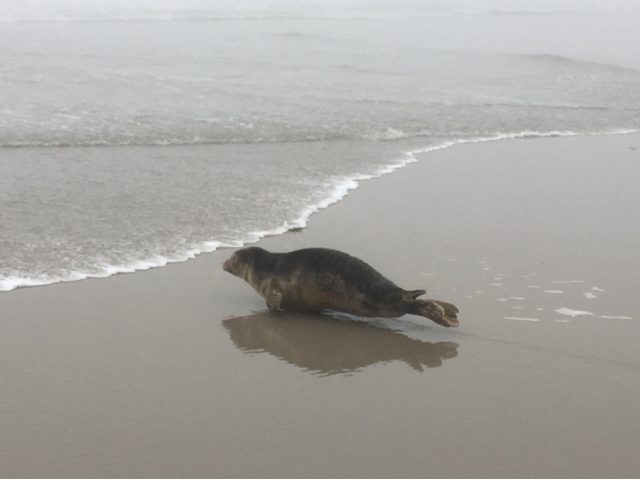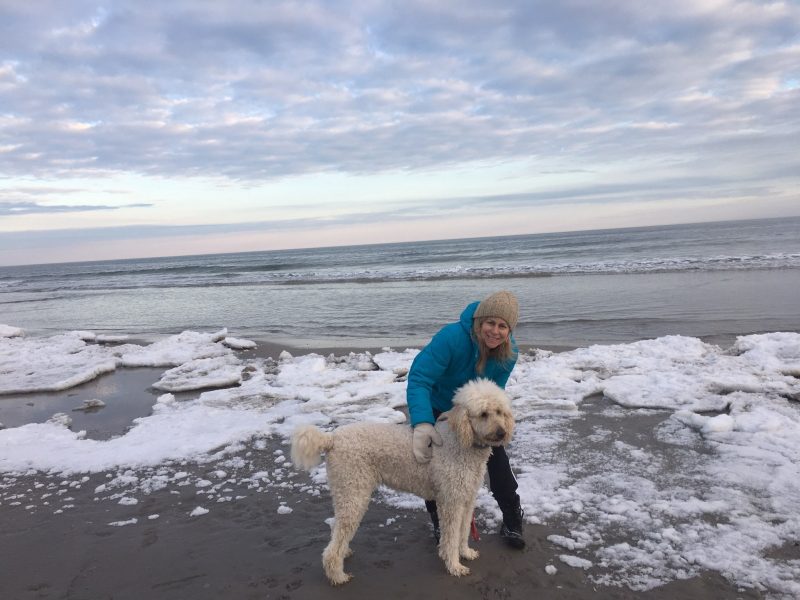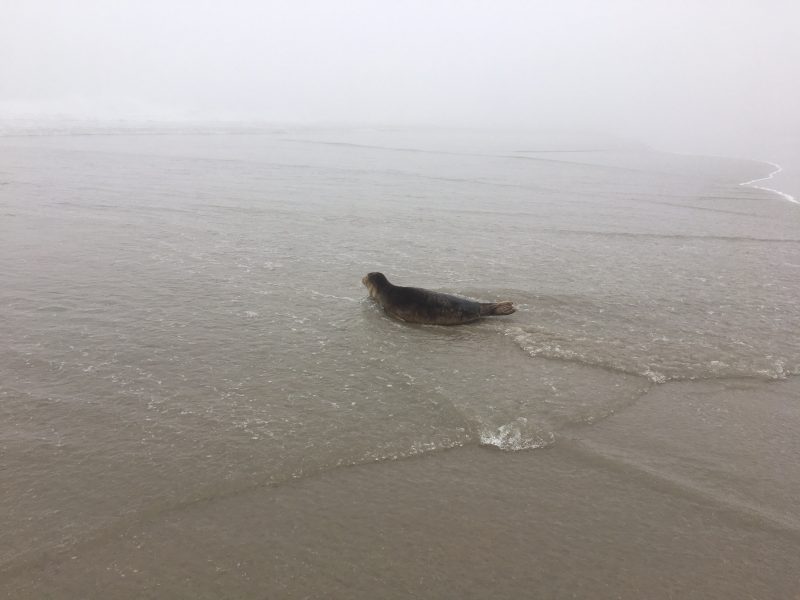
By Maddy Vitale
When Jill Nuss took her dog Sunny for an early morning walk on the beach in Ocean City Friday, it was like any other stroll. The standard poodle romped in the sands and explored the water’s edge.
And then it happened. While heading to the 24th Street beach, Sunny pulled on the leash and barked continuously. Quickly, what was routine turned into something quite different.
“She was dragging me. There was so much fog, I couldn’t see much, and then all of a sudden, I saw a seal lying on the beach,” Nuss, of Ocean City, said. “I thought it was hurt.”
Sunny barked at the seal, but didn’t get real close, Nuss said.
Immediately, Nuss called the Humane Society of Ocean City to report the sighting. She also called her husband Brad Nuss. But minutes later, the seal went back into the ocean and did not appear hurt. She called the HSOC with the updated information.
“They said someone may come out still,” Nuss said. “I guess they would have to go looking in the waters.”
For Nuss, who loves giving her active dog lots of walks, it was exciting.
“It was so cool to see a seal close up. He had dark, sweet eyes with these big whiskers and he was light brown,” Nuss said. “There was so much fog and it was cold and wet, but just seeing him was worth it.”

Marine Mammal Stranding Center Director Bob Schoelkopf said after looking at the photo by Nuss, that it was a yearling harbor seal.
“This species comes to New Jersey beaches every winter about this time. The animal came ashore probably after feeding to get some sleep,” Schoelkopf explained.
He said in his decades of experience with mammals at the stranding center located in Brigantine, people often ask him why a seal would come up on the shores.
“Just because they are on the beach, doesn’t mean they are injured,” Schoelkopf said. “They use the water for their transportation and go to the beach to get some rest.”
Schoelkopf also said that it is not unusual to see a single seal when they come up to rest unless they are in active fishing areas in the back bays, for example.
“Seals routinely come from northern waters like Canada and Maine to southern waters,” he said. “Even if it is 40 degrees here, it is still warmer than it is there, and there is still food for them, and they can avoid a lot of ice.”
Schoelkopf urged anyone who sees a mammal in distress not to touch it because it is a wild animal that can bite.
“Seals bite. They are wild animals. I can’t stress that enough. There have been dogs bitten by seals,” he said. “I have had people try to pet them. I can’t stress it enough that these are wild animals.”
The most important thing to do is to contact the stranding center immediately.
Schoelkopf also emphasized that social media may be helpful, but it is not the best way to alert the stranding center about injured mammals. He said the best thing a person can do is to take photos and email them to the center as well as call.
“It is important to get the photos to us,” Schoelkopf said.
Photos help in determining the type of mammal, the injuries and extent of them and the animal’s size, so the stranding center workers have the proper gear for possible transport to the center, he said.
If you see a mammal in distress call the Marine Mammal Stranding Center in Brigantine at 609-266-0538 or email mmsc@verizon.net.






